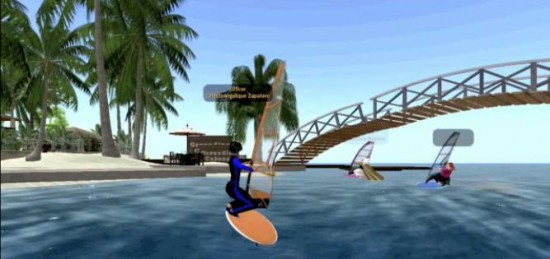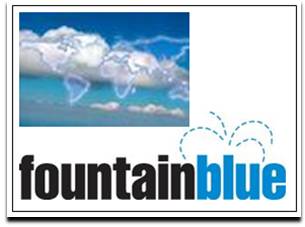How do you keep up with industry trends? You hear from the people setting the trends.
On September 24th, FountainBlue held its annual virtual worlds conference on Cisco’s campus in Milpitas, CA.
The event featured a session titled “Trends in the Virtual Worlds Industry: An Update on What’s New and What’s Coming.â€
The panel:
- Facilitator Jeff Pope, Founding Partner, Spark Sky Ventures
- David Helgason, CEO and Co-Founder, Unity
- Chris Platz, Creative Director and Art Lead, Stanford Sirikata Labs
- Eilif Trondsen, Research and Program Director of the Virtual Worlds @ Work Consortium at Strategic Business Insights, SRI International
- Mark Wallace, Conversation Manager, Linden Lab

The panel agreed that the term “virtual worlds†may no longer be applicable. Eilif Trondsen noted that many technologies (e.g. Teleplace, Protosphere), provide virtual spaces (for corporations), rather than an entire virtual world. Interestingly, at a Stanford Media X event, IMVU noted that they’re “NOT a virtual world“, either. Chris Platz noted that he refers to the technology as a “real-time 3D collaborative spaces.â€
Adapting to a changing user community
Platz noted that many virtual worlds technologies were designed for an older audience – one that will soon give way to a younger generation (e.g. Gen Y). The technologies will need to adapt to a user base who grew up in a “virtual world†– they will have a different set of expectations. An audience member noted that for some kids, their first experience online is in Club Penguin (or a similar “worldâ€) – before they experience the broader web.
Platz encouraged virtual worlds to tear down the “walled garden†(e.g. closed system) in favor of an open system that integrates with Facebook, Twitter and other systems. Platz developed and experimented with a Flash-based MMORG (massively multi-player online role-playing game) that ran as a Facebook app. He predicted that some time soon, someone would develop a fully functional 3D virtual world embedded in Facebook – one that users interact with while on Facebook.com.
Avatar or no avatar?
The panel had an interesting debate on the use of avatars. The debate was spurred from a point made about someone’s notion of an “ideal corporate learning environmentâ€, which listed the following attributes:
- Ability to give presentations
- Virtual whiteboard
- Document collaboration
- Desktop sharing
- Use of avatars is secondary
What the debate really boiled down to is not “avatar or no avatarâ€, but “immersion or no immersion?â€Â Mark Wallace from Linden Lab took the “avatar stanceâ€, noting the deep association between a user and her avatar – and the resulting impact of that connection. Wallace noted that Second Life residents whose avatars participate in virtual weight loss programs actually lose weight in real life.
Audience member Laura Kusumoto noted that Wallace’s example referred to “Club One Island†on Second Life – I wrote about Club One in a posting about a Stanford Media X event in which they presented.

For me, it’s useful in a group learning environment to receive signals about the other members of the group (e.g. are they paying attention, are they engaged, are they asking questions, etc.).
There are non-immersiveness tools that can be leveraged (e.g. webcams, text chat, message boards, etc.). However, I do see the value of immersiveness for learning – I’d compare it to an in-person team meeting vs. an audio-only conference call.
Augmented social graph reality
David Helgason made an interesting prediction with regard to augmented reality. Helgason believes that the future of augmented reality includes your social graph overlaid onto your AR experience. In the near future, your smartphone may be able to perform facial recognition on a person – and overlay your social graph connections to that person (on your smartphone’s display).
Perhaps the more immediate opportunity is already happening – via location based services as opposed to augmented reality. For example, I arrive at a restaurant and find reviews from people in my social graph. Reading my friends’ reviews lets me know whether I should go in to grab a table.
Second Life Enterprise
Linden Lab’s Mark Wallace was asked to comment on future plans for Second Life Enterprise. Wallace noted that Linden Lab is taking a holistic approach to the entire platform – looking to make improvements to the user experience that apply to all users. Wallace would not comment specifically on Enterprise, noting that the improvements underway would benefit everyone.
Conclusion
This isn’t your father’s virtual world any more. From hearing this panel, I’d say that virtual worlds technologies (or, real-time 3D collaborative spaces) will continue to morph and blend immersive experiences with the social graph, social gaming and augmented reality. As facilitator Jeff Pope noted, it will be interesting to gather again in 12 months to re-assess where the trends have taken us.
(This article is reprinted with permission from It’s All Virtual.)
- Mobile revolution arrives for virtual events - May 4, 2011
- Six tips for selling virtual event sponsorships - March 25, 2011
- Generate Sales Leads With Virtual Events - December 14, 2010

